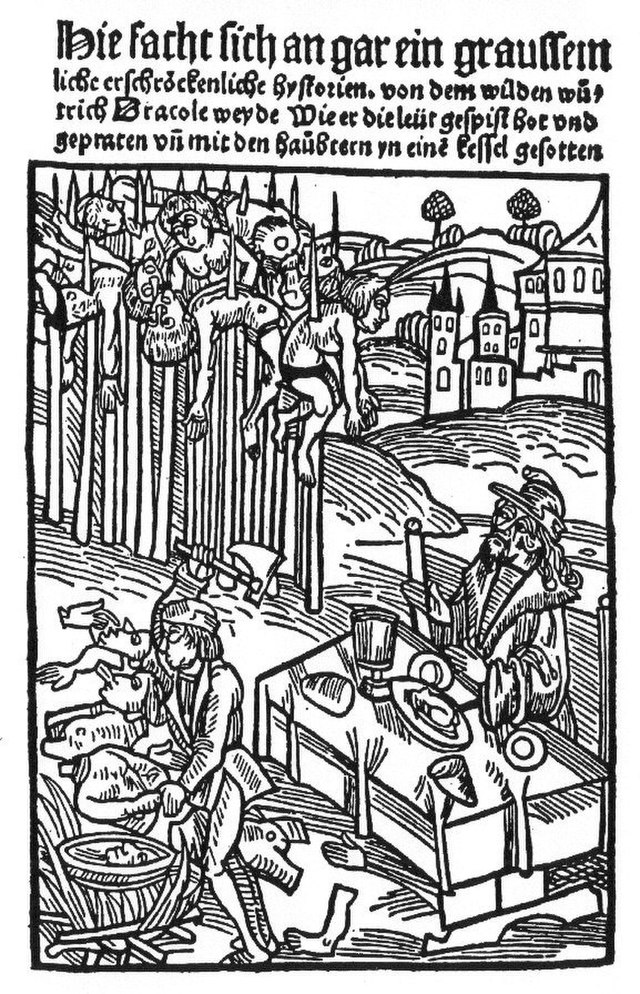Impalement as an instrument of justice
The origin of the nickname "Tepes" and the method of torture

Illustration of Vlad III Dracula dining among impaled boyars - Wikicommons
Using titles or epithets to highlight qualities, physical traits, or negative aspects of rulers and powerful individuals was a common practice in the past. This was also the case for Vlad III Dracula, who went down in history as "the Impaler" (Țepeș in Romanian). The Wallachian voivode earned his infamous nickname from the brutal method of torture he employed: impalement.
Vlad first encountered this practice as a young hostage at the Ottoman court (where the Turks had learned it from the Egyptians). There, he also met one of his greatest friends and rivals, Mehmed II. Upon returning to his homeland as the ruler of Wallachia, Dracula refined the technique of impalement, applying it—with modifications—as both a form of punishment and justice against nobles, peasants, and foreign enemies.
The torture involved sharpening a long pole (broad at the base and narrowing toward the tip), coating it with an oily substance (or honey), and carefully inserting it into the victim's rectum to avoid severe damage to vital organs, ensuring the pole emerged through the mouth. The victim would then be hoisted upright, left to endure agony and starvation—a process that could last days before death.
The Impaler varied the method based on the status of the condemned. Nobles or high-ranking individuals were subjected to longer poles, sometimes gilded with gold. Merchants or businessmen were impaled on poles carved with notches to increase pain. Thieves or traitors faced poles coated with honey, attracting bees to intensify their suffering.
The most infamous event linked to Vlad Dracula’s use of impalement was the “Bloody Easter of Târgoviște” During this gruesome event, the voivode ordered the torture, burning, decapitation, and impalement of approximately 200 boyars in a single day—feasting amid their suffering—punishing them for conspiring against him or threatening the stability of his power and peace in the realm. On another occasion, he impaled 10,000 people in Sibiu, accusing them of treason.
Such practices made him deeply feared by his enemies, cementing his terrifying reputation.
Marco Locatelli, Da Dracula al Conte Dracula: incontro tra storia e mito , 2021
Matei Cazacu ,Vlad III Dracula: The life and Times of Historical Dracula, Gaudium 2021
2025-06-06
Salvatore Ciccarello
